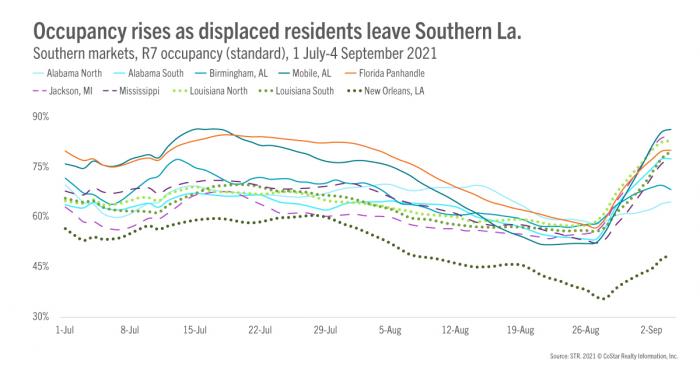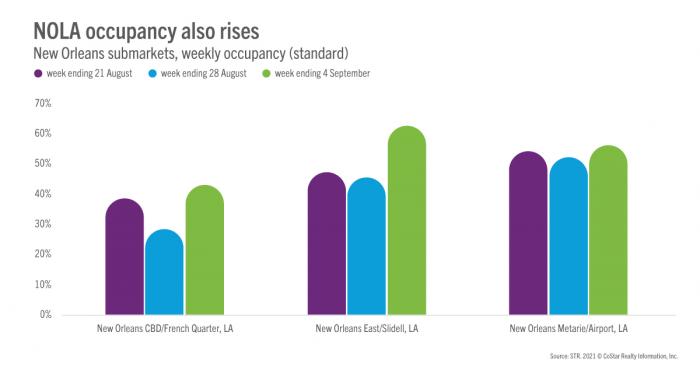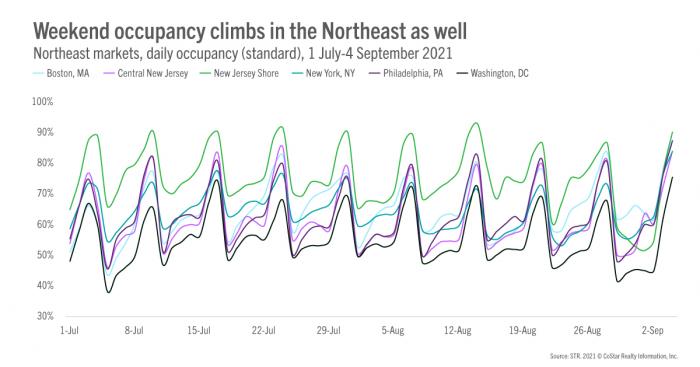Almost two weeks after Hurricane Ida made landfall, the impact of the storm is becoming clearer. Reports show the latest death toll at more than 130 between the Gulf region and the Northeast, and officials in New Orleans are still advising evacuees to stay away from the affected areas due to continued power outages, road blockages, and disruptions in other essential services.
The picture is also coming together on the secondary impact on the hotel industry, not only in the Gulf region, but in those parts of the Northeastern U.S. that were hit by the remnants of this catastrophic storm.
We continue to keep those affected in our thoughts and will do our best to continue updating clients on the industry impact. Analysis of our most recent data from 29 August-4 September contains the added layers of Labor Day weekend demand as well as the return of college football, but there are clear impacts from Ida as outlined below.
Significant volume of temporary closures in New Orleans
The preliminary expectation is there will not be widespread permanent closures because of storm damage. However, a significant volume of inventory is temporarily closed due to continued power outages as well as staffing issues and third-party providers such as linen services being offline. Many of the properties that fall into this category are showing anticipated reopening dates in the short-term.
Including all the properties that report data to STR in the NOLA area, we researched the operating status of 208 hotels accounting for 35,835 rooms. From that sample, 155 properties (75%) and 28,756 rooms (80%) are currently closed.
The table below shows planned reopening dates by month. However, there will almost certainly be updates to this information as the weeks progress and more properties make determinations based on power restoration, supplier availability, staffing, demand, etc. Currently, 24.2% of closed rooms don’t show a reopening date.





